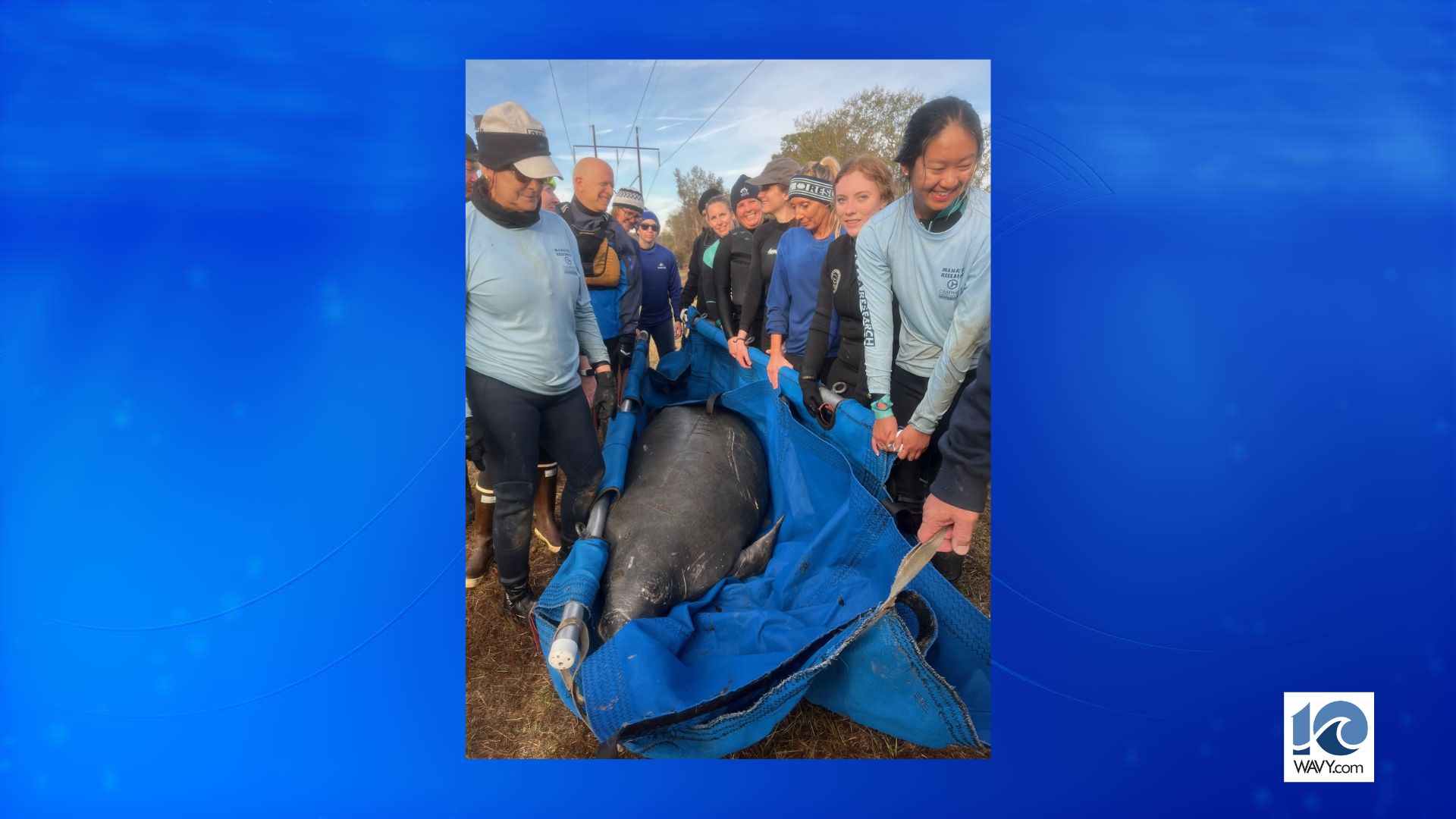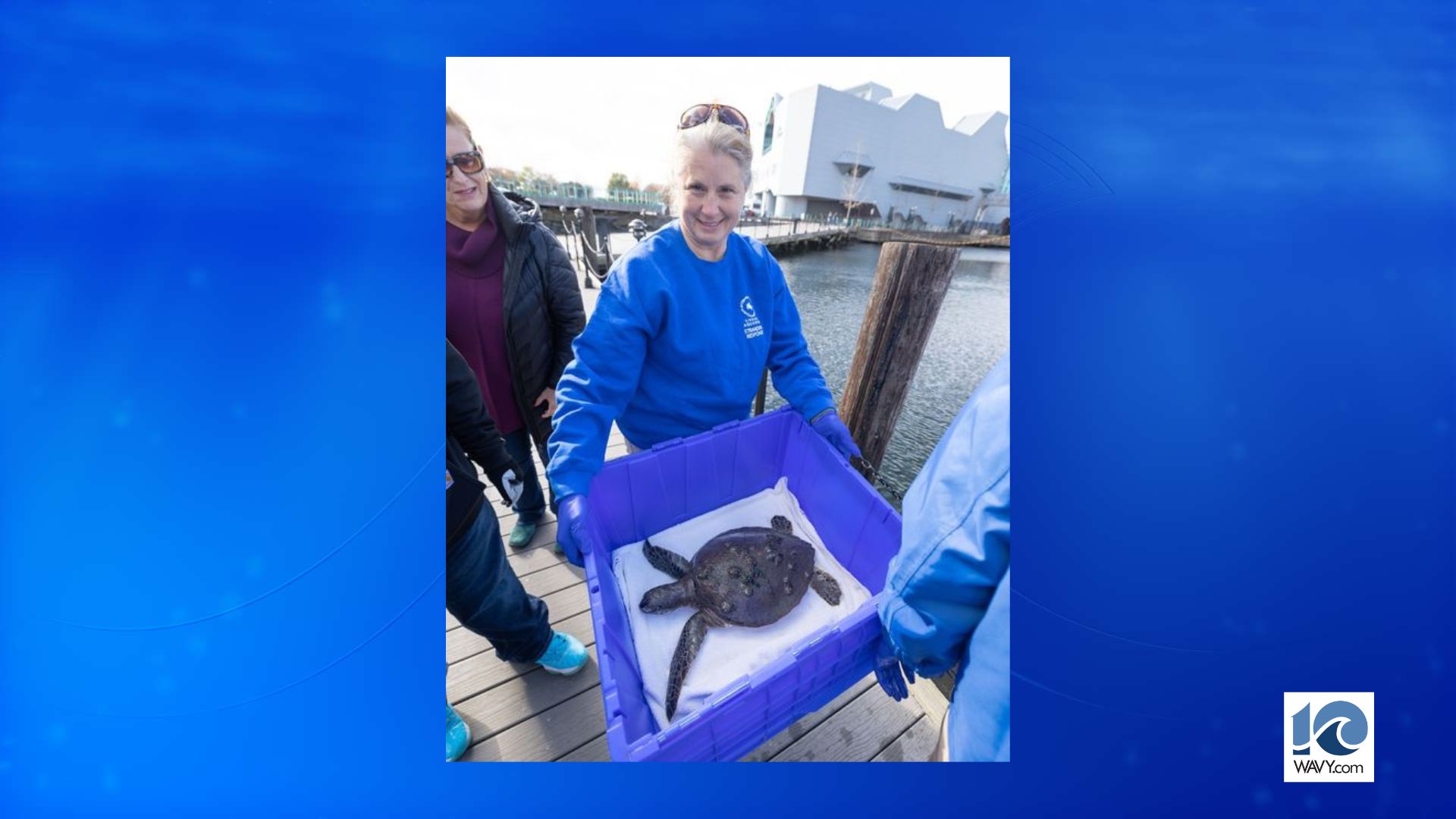HAMPTON ROADS, Va. (WAVY) – They look like jellyfish from another planet. Portuguese man o’ war are distinguished by the inflated air sack they use to keep themselves on the top of the water and navigate the vast oceans. And they sting – really bad.
Area beachcombers have spotted a few washed up on the sand recently, from the Outer Banks to Chesapeake Bay.
“We have had several wash up on the beach with this last [storm] system,” said Chad Motz, captain of the Ocean Rescue team in Nags Head, via email.
Viewers sent in the photos below, taken in Ocean View this morning and yesterday, respectively.
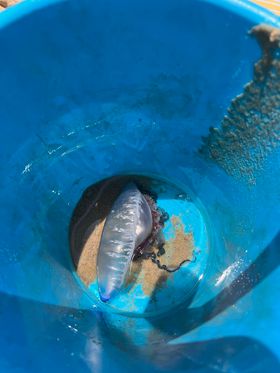
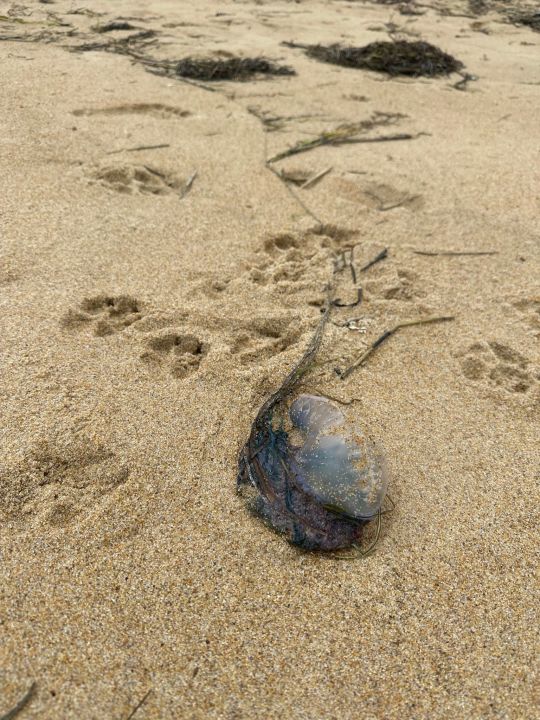
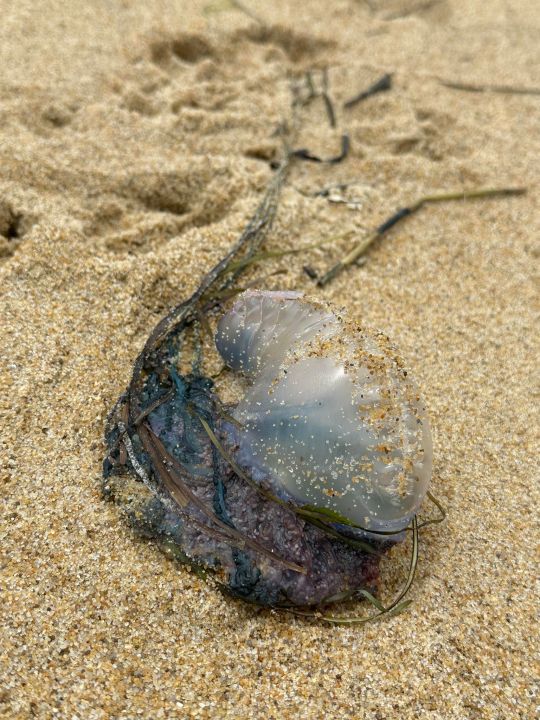
Ocean View resident Melissa Moser was walking her dog along the sand near Atlans Street when she happened upon one. She’d seen one previously posted in a local group, and just the day before, participated in an open-water swim as part of the inaugural Mermaid Series Run, Swim and Mermaid Festival.
“I walk the beach several times a day, and I was walking with my dog and she actually started sniffing – there’s a lot of seaweed that had washed ashore because of all the storms and strong winds we’ve had,” Moser said. “And near this clump of seaweed there was something that did not look like seaweed.”
She said she and her dog made a point to keep their distance from the venomous blob.
Man o’ war are actually a collection of genetically identical lifeforms functioning together as one organism. Their air sacks range from a translucent pink or purple to dark blue. The stinger-emblazoned tentacles they use to catch and paralyze food can grow as long as 30 feet.
Man o’ war are unable to determine their own movement and are carried around by air and water currents. That’s exactly how these warm-water, tropical animals ended up up here in our neck of the woods (of the ocean).
“Sometimes it’s seasonal. They’re going to be a lot of times found in groups, and the currents and wind will push them up the Gulf Stream or in towards shore,” Kaitlin Wills with the North Carolina Aquarium on Roanoke Island told us. “We’ve had a lot of windy weather lately, so it could be why we’re seeing them more frequently now.
Man o’ war live off of the small marine life like fish and crustaceans they manage to trap in their long tentacles. They’re also (fortunately) a regular food for loggerhead sea turtles, which are relatively common in our area, according to Wills.
The sting of a man o’ war can be extremely painful, but it’s rarely fatal for humans.
“Usually if people get stung, it’s something that can be treated at home,” Wills said. “If they have a mild reaction to it, it’s something they can go to (an) urgent care for, but usually they just say to put vinegar on the area, and then hot water will actually help with the pain and help neutralize the stinging cells.”
If you happen to come across one washed up on the sand, admire (or despise) it from a distance – and watch your step. Their long thin stingers can remain active for days or even weeks of being out of the water.
As for Moser, the chance of getting stung isn’t enough to keep her away from the water.
“It’s not going to keep us off the beach – you know, I love that beach life – but you definitely have to be aware,” she said.
“If I hit the water in the next few weeks, I may just paddleboard, and paddleboard very well so I don’t end up in the water,” she quipped.




